Vermeer reveals future tech haytools
From windrow-guided auto-steering to a robot bale collector, the company is going public with some innovative tools
July 14, 2021
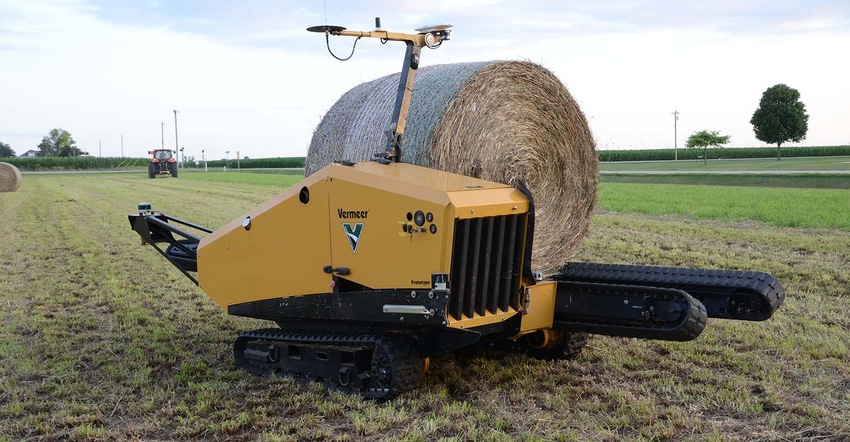
Editor's Note: You can see the Bale Hawk in action below - including a discussion of how the programming for this robot bale handler works in the field.
When it comes to future technology in agriculture, a lot of the development is done in secret. But in some cases, there comes a time to go public, to bring farmers and dealers into the development process. Recently, Farm Progress was included in a special private showing of some not-quite-ready for market tools in development at Vermeer.
"We're going public with these tools because we want to involve our dealers and customers in their development," says Mark Core, vice president, Vermeer Corporation. "We can do a lot in secret, but field testing is important too."
In the special event, Vermeer shared four major development projects – the Bale Hawk, an automated bale handling system; windrow-based auto-steering for the ZR5-1200 Self-Propelled Baler; work on a sensor system for managing bearings; and a new Forage Commander app for managing the bale handling business.
The event did kick off with operation of a vintage Vermeer 605 baler, which as Core noted doesn't look that much different than a round baler you would buy today – at least in base operation. The controls on that baler were rope-based – with the operator pulling ropes to initiate bale tying and release – today that's of course done a little differently.
But the key is labor, or lack of labor, that's driving some of this innovation. "Just as Gary Vermeer faced that challenge 50 years ago when he developed the round baler, the same problem exists today," Core adds. "These tools can help overcome some of those challenges."
Out of the box bale handler
Moving bales from where they're left in the field for collection and storage is a time-consuming task. And some farmers will leave them where they fall, perhaps far longer than necessary. The Bale Hawk could be a solution to the problem.
This automated system is essentially a robot bale collector. "You set up a geofence, and define your field area in GPS," says Gregory Laughlin, senior software engineer, Vermeer. "The Bale Hawk moves through that area and collects bales to be stacked in one place."
It sounds simple but developing a machine that can "see" bales in the field, while also including the safety devices, and creating gentle handling of those bales as they're collected means dealing with a lot of design challenges. The machine uses rubber belts to scoop up the bales into its carrying area. It can handle up to three bales at a time – and has been tested with bale weights up to 1,400 pounds each.

For sight, the machine uses a Lidar, or Light Detection and Ranging system, that can pick up the shapes of bales in the defined area. The machine develops its own patch through the "bale field" with some simple rules. "We designed it to move from the outside in," Laughlin says. "We didn't want the machine to get into the middle of a bunch of bales and have to weave around to get out."
As for the Lidar unit? Laughlin admits the high-vibration of the Bale Hawk has destroyed a couple units. But this is a prototype, and either a special cushion can be developed, or a solid state Lidar could be added. "But those solid-state units are more expensive," he says.
Essentially, the 6,000-pound Bale Hawk, powered by a Deutz engine, can be dropped off in a field where you've baled hay all day, and overnight it would collect all the bales into rows you designate for later pickup and transfer to where you need them.
"Moving bales is a tedious chore, that a lot of people don't like to do," Core says. "This can help solve the problem."
And there could be agronomic benefits of this lighter weight machine moving through the field to collect bales, reducing compaction caused by bigger tractors toting bales.
The machine will continue in development as Vermeer works with dealers and farmers to best understand what the market needs.
Self-guided, self-propelled baler
The ZR5-1200 has been a game-changer for a lot of baler operators. The single-purpose machine includes a lot of technology that makes baling easy for even novice users. Essentially, drive it down the row, the machine will stop, turn, and drop the bale when it's ready, then you head back up the windrow.
Under development now is a new auto-steering system, but this one doesn't use GPS. "We're working to let the windrow guide the machine," says Kent Thompson, research and development manager, Vermeer. "There is no GPS required for this auto-steering system."
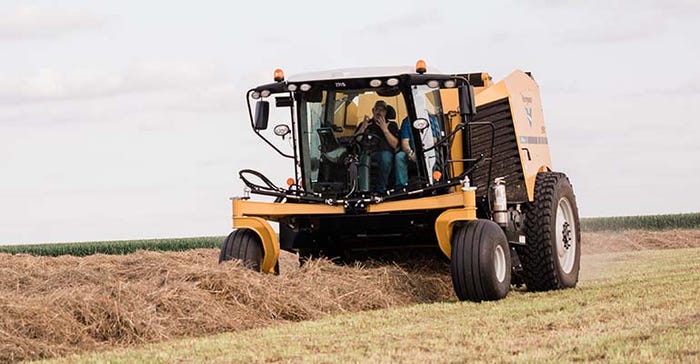
Thompson has a unique position in the company. He's tasked with developing products that are not on the market yet and was heavily involved in the development of the ZR5-1200. This auto-steering refinement of the machine can further reduce operator fatigue during long days of baling.
The system works to "see" the windrow, Thompson explains. Like the Bale Hawk, Lidar is at work to help the machine stay on the windrow. "There are challenges because of light or dust that make it harder for the system to see the windrow," he explains.
But in operation, the system is easy for even a novice user – like an ag journalist. The operator simply gets on the windrow and engages the auto-steering system. During operation at the Pella, Iowa, event, the fluffy windrows were easily discernible from the cut forage base, and the machine moved at speed with no hands on the wheel.
"A benefit of that is during operation, you can check other systems, including bearing sensors," Thompson points out. That system uses temperature sensors to keep tabs on baler bearings, more on that later.
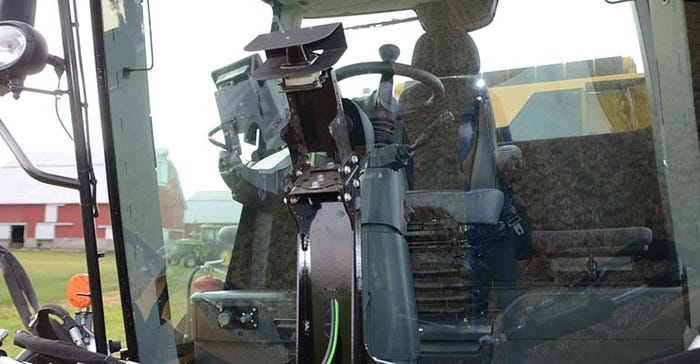
The process is simple, once on the row the machine does the work, even stopping and turning (per your instructions) to wrap and drop a bale, return to the row and await your command to start back up.
As with any vision-based system, it's the contrast between the target – the windrow – and the background that's important. The machine, for example, is a popular stalk baler, but the difference between a cornstalk windrow and corn residue can challenge the Lidar system. And dusty conditions could be an issue.
However, creating an even simpler machine for the operator at a time when skilled labor is harder to find may offer a market opportunity.
Manage those bearings
"There are so many bearings in a baler," comments Vermeer's Core, who farms himself and makes a fair amount of bales every year. "And bearings fail."
The challenge is catching the failure before you have an unintended combustion event, and any baler manufacturer can tell stories of how hot bearings can turn into trouble fast.
The answer is a new sensor system under test. Peter Horn, product engineer, Vermeer, explains that the system includes a small temperature sensor connected to a thermistor wire linked to a bearing grease zerk. That sensor reports information into the baler monitor over Bluetooth. The sensor reports operating temperatures in real time.
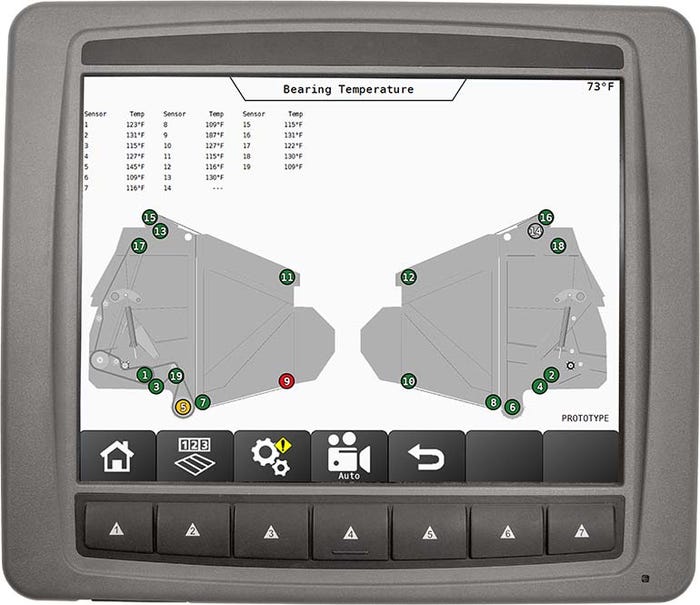
"It's a simple system with no moving parts, and the battery in the sensor has a multi-year life," Horn says. "We're now learning about the right operating temperatures for bearings and how to alert operators if there's a problem."
And that's the challenge. How hot should a bearing operate on a 95-degree F day when going full tilt to get bales made before rain washes through the windrow? "That's what we want to learn," Horn says.
These sensors are gathering bearing-specific information that hasn't been available in the past. Initially, there are sensors across all the bearings on a ZR-5 for the test. In the future, this may change to a range of options from sensors only on very specific bearings. But for now it's about testing and learning what works.
During operation of the ZR-5 with the sensor system, it's easy for an operator to open that baler bearing screen and touch specific bearings and get actual operating temperatures. And once more information is known the monitor can show bearing conditions from green to yellow to red.
Having that information may also help with predictive maintenance. With the baler bearing information, it may be possible someday to provide a warning so the farmer can replace it before it fails, but perhaps finish the day first. Scheduled downtime tends to be less expensive than surprise downtime.
Taking control of baler information
How many bales did you make from a specific field? How much did each weigh and what was the total weight gathered? Those are questions that are great for forage management, but if you're a custom baler, it's how you get paid.
"We've found that custom baling operations bill customers often when they need the cash, or inconsistently," says Core. "We're looking at a system to change that, and in agriculture Vermeer hasn't been known for app development."
That's changing with the Forage Commander, an app-based system that pulls information from a data gateway installed in a baler to provide detailed information for the app.
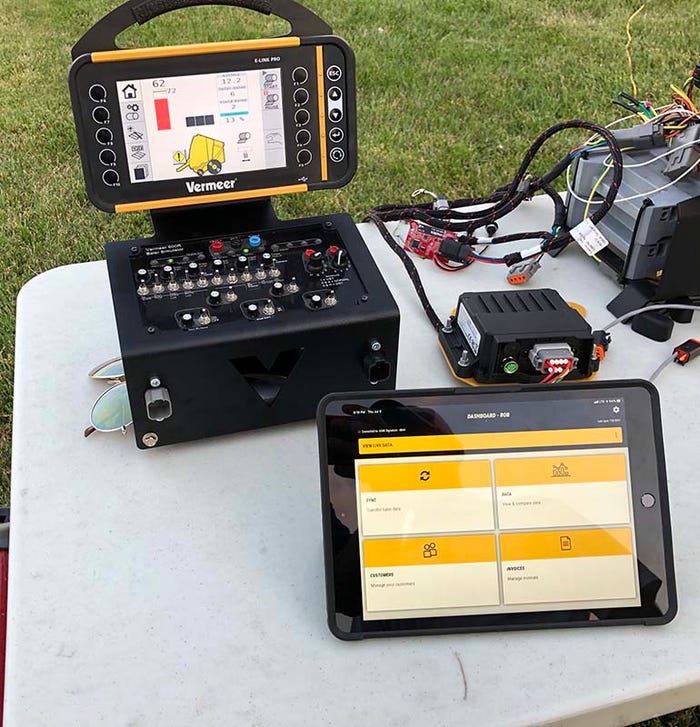
Rob Franz, embedded software engineer, Vermeer, explains that the data gateway connects to the baler's network to capture information about the work being done by the machine. "We can transfer baling data to the app," he says. "That includes the number of bales made, and other information to report."
That information is synched from the baler into the app and from a tablet a custom operator can even invoice a customer the day the work is finished. "We're looking to launch this in 2022," Franz says.
This brings a new level of professionalism to the custom operator's business because it's actual machine information from the field, not a later estimation of the work done. This provides the customer transparency, Franz explains, to the work done. And it gets the custom operator paid more efficiently. "We're aiming for the custom market, but large farmers raising forages can use this kind of information too," he says.
While the Forage Commander is closer to market, none of these new tools is ready for prime time just yet. Vermeer is looking at new niches for its ag-focused business, and worth watching for the future.
About the Author(s)
You May Also Like




.png?width=300&auto=webp&quality=80&disable=upscale)
